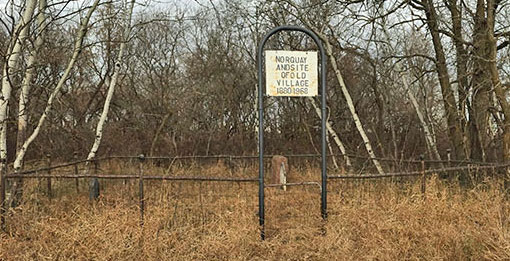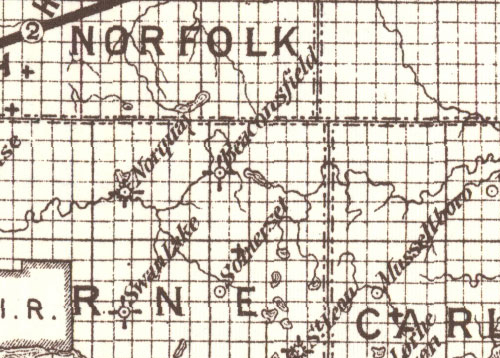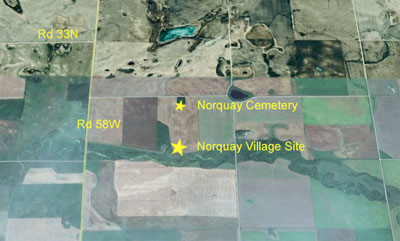 |
The
Norquay Cemetery is on the south side of
a small bluff of
trees and is not visible from the nearby road. The village of Norquay,
founded about a kilometre mile south of this site ( 17-6-10) around
1880 was
named for former Manitoba Premier John Norquay. The village wqsn't
viable for long but the community, centred around a Church and school,
was active for some ime.

http://www.mhs.mb.ca/docs/sites/norquaycemetery.shtml
N49.47980 A98.78053



Charles Holland and Thomas H. Pentland selected the site on rumours that a railway would pass through the area.
T.H. Pentland served as Postmaster.
The first house was built by Dr. Baldwin. There was a hotel, built and operated by the Priors, and called the Prior Hotel. William Brown was a blacksmith, and Ed Newly a tinsmith W. Holland was co-owner of the general store (along with Thonmas Pentland), and was also a land conveyancer, an issuer of Marriage licenses and a General Agent.There was also a Justice of the Peace.
John McIntosh (1850-1902) and Elizabeth Westbrook (1852-1923) came west in 1881 from McIntosh Mills, ON. They operated a mill that was that was later moved to Manitou in 1893. D. Corbett is listed operating a chopping mill. That could have preceded Mr. McIntosh's gristmill or perhaps was separate operation.
Mr. Berry who had been a butcher in England and who had brought his butchering tools with him, built a combination butcher shop and slaughter house in the village. His first customers were the boarding house keeper and other locals who flocked to buy their first fresh meat in six months.
Dr. Pennefather and his family had come to Norquay, but his wife found that place too isolated. Upon completion of his house he moved his family to Manitou.
Mrs. Pennycock, who served as a midwife was also a "very good nurse.
A school was built, but it was soon to be closed as all the families moved away.
The "English Church" and he held a service on Sundays in a shanty. They were the first Anglican services in this general area. When the Rev. Pinkham went to Norquay in 1884, Dr. Baldwin gave a site for a rectory.
The nearest railway line at that time was the CPR at Manitou, 60 kilometres away.
The CPR put a line 8 miles north at Holland, and the NCR laid tracks 4 miles south at Swan Lake. Without a railway, the high hopes of the village of Norquay faded and died. The general store was also moved. fire. In a few years, there was ''not a trace of the town'' to be found.